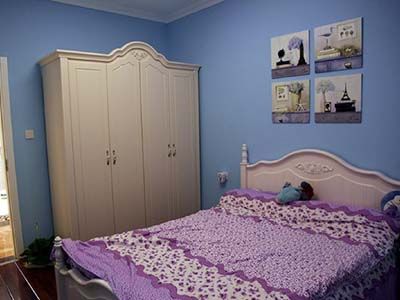年年有余是指什么生肖
年年有余透三下猜一生肖
今期买虎输尽光,年年有余透三一,欲钱请看沙无尽,似醉未醉七分醉。(楼)(年)小羊温顺人人爱 正确答案是:羊
欲钱买年年有余的是什么生肖
Everything is ready这 儿 都 颗 以 万nszg.baidu/www.f-du.com---------------一、主路由器设置方法:1、先将网线(总线)插在无线路由器的WAN口,用一条网线一头插入无线路由器的任意LAN口一头连接电脑网卡,开启路由器的电源。2、电脑打开浏览器在地址栏填上无线路由器的设置网址:192.168.1.1(路由器背面有标注)。3、然后输入admin默认账户名和密码相同(路由器背面也有原始数据的提示)点确定。4、进入无线路由器设置界面之后,按照设置向导选择上网方式(不同的宽带选择的方式也不同),输入上网账号及密码。5、保存,继续设置无线密钥,(密码建议使用数字和英文组合,最好中间使用@符号,这样防止给别人蹭网)6、保存以后,即可正常上网了。
为什么年年有余?猜一生肖
我的回答是:猪
一年四季强筋骨指什么生肖
楼主回老家,就刚刚,姑妈给我介绍个对象,中午去咖啡厅见面,我和姑妈先到。。。。。歌。。。。过了几分钟,那女孩和她妈妈一起来了,我抬头一看,愣住了,和她们对视了几秒,哥无法再淡定了!女的自己在XXXKTV做公主,她妈妈在苏州XXX温泉做按摩的!更蛋疼的是我上了她妈妈!我该如何是好!
指字在香港指什么生肖
你好,这东西没人会预测。 如果真会预测,早就成为亿万富翁了。 预测这东西我早就不信了,以前在网站上,经常看别人预测,结果买了,连一个号码都没对上。 楼主真要买,就权当是献爱心吧。 如果有人告诉你买什么号码,建议你都不要相信,因为我玩了几年房子跟老婆都玩没了。 PS:这东西真的不是好东西,洗心革面,重新做人,希望你能当机立断,不要存侥幸心理,果断戒赌。 希望可以帮到你,请采纳,您的采纳将是我回答的动力,谢谢
跪求介绍中国结和年年有余(鱼)的英文文章
Chinese knots中国结 Chinese Knots Traditional Chinese decorative knots, also known as Chinese knots, are typical local arts of China. They are a distinctive and traditional Chinese folk handicraft woven separately from one piece of thread and named according to its shape and meaning. In Chinese, "knot" means reunion, friendliness, peace, warmth, marriage, love, etc. Chinese knots are often used to express good wishes, including happiness, prosperity, love and the absence of evil. Chinese people have known how to tie knots using cords ever since they began learned how to attach animal pelts to their bodies to keep warm thousands of years ago. As civilization advanced, Chinese people used knots for more than just fastening and wrapping. Knots were also used to record events, while others had a purely ornamental function. In 1980, dedicated connoisseurs collected and arranged decorative yet practical knots passed down over centuries in China. After studying the structures of these knots, the devotees set about creating new variations and increasing the decorative value of knots. The exquisitely symmetrical knots that come in so many forms are as profound as the great cultural heritage of the Chinese people. The Chinese knot is based on over a dozen basic knots named according to their distinctive shapes, usages, or origins. The Two-Coins Knot, for example, is shaped like two overlapping coins once used in ancient China. The Button Knot functions as a button, and the Reversed Swastika Knot was derived from the Buddhist symbol commonly seen on the streamers hanging down from the waistband of the Buddhist Goddess of Mercy. The knots are pulled tightly together and are sturdy enough to be used for binding or wrapping, making them very practical. Furthermore, the complicated structure of the Chinese knot allows all kinds of variations and enhances its decorative value. Almost all basic Chinese knots are symmetrical, which has set certain technical limitations on the design and creation of new patterns and themes. Symmetry is consistent with time-honored ornamental and aesthetic standards in China. Visually, the symmetrical designs are more easily accepted and appreciated by Chinese people. Except for the Two-Coins Knot, the Chinese knot is three dimensional in structure. It comprises two planes tied together leaving a hollow center. Such a structure lends rigidity to the work as a whole and keeps its shape when hung on the wall. The hollow center also allows for the addition of precious stones. Crafting the Chinese knot is a three-step process which involves tying knots, tightening them and adding the finishing touches. Knot-tying methods are fixed, but the tightening can determine the degree of tension in a knot, the length of loops (ears) and the smoothness and orderliness of the lines. Thus, how well a Chinese knot has been tightened can demonstrate the skill and artistic merit of a knot artist. Finishing a knot means inlaying pearls or other precious stones, starching the knot into certain patterns, or adding any other final touches. Since ancient times, the Chinese knot has adorned both the fixtures of palace halls and the daily implements of countryside households. The Chinese Macrame has also appeared in paintings, sculptures and other pieces of folk art. For instance, the Chinese Macrame was used to decorate chairs used by the emperor and empress, corners of sedans, edges of parasols, streamers attached to the waistbands of lady's dresses, as well as all manners of seals, mirrors, pouches, sachets, eyeglass cases, fans and Buddhist rosaries. The endless variations and elegant patterns of the Chinese knot, as well as the multitude of different materials that can be used (cotton, flax, silk, nylon, leather and precious metals, such as gold and silver, to name a few) have expanded the functions and widened the applications of the Chinese knot. Jewelry, clothes, gift-wrapping and furniture can be accentuated with unique Chinese knot creations. Large Chinese knot wall hangings have the same decorative value as fine paintings or photographs, and are perfectly suitable for decorating a parlor or study. The Chinese knot, with its classic elegance and ever-changing variations, is both practical and ornamental, fully reflecting the grace and depth of Chinese culture. 中国结 "中国结"全称为"中国传统装饰结"。它是一种中华民族特有的手工编织工艺品,具有悠久的历史。"中国结"的起源可以追溯到上古时期,当时的绳结不仅是人们日常生活中的必备用具,同时还具有记载历史的重要功用,因而在人们的心目中是十分神圣的。很早以前人们就开始使用绳纹来装饰器物,为绳结注入了美学内涵。除了用于器物的装饰,绳结还被应用在人们的衣着、佩饰上,因此绳结也是中国古典服饰的重要组成部分。 唐宋时期(公元7~13世纪)是中国文化、艺术发展的重要时期。这一时期中国结被大量地运用于服饰和器物装饰中,呈明显的兴起之势。至明清时期(公元1368~1911年),"中国结"工艺的发展达到鼎盛阶段,在诸多日常生活用品上都能见到美丽的花结装饰。其样式繁多,配色考究,名称巧妙,令人目不暇接,由衷赞叹。 "中国结"的编制过程十分复杂费时。每个基本结均以一根绳从头至尾编制而成,并按照结的形状为其命名。最后再将不同的基本结加以组合,间配以饰物,便成为富含文化底蕴,表示美好祝福,形式精美华丽的工艺品。 悠久的历史和漫长的文化沉淀使"中国结"蕴涵了中华民族特有的文化精髓。它不仅是美的形式和巧的结构的展示,更是一种自然灵性与人文精神的表露。因此,对传统"中国结"工艺的继承和发展是极有意义的。 年年有余:[
《梅印指》是指什么生肖
小狗啊,小时候学过一篇文章叫《雪地里的小画家》,文章是这样的: 下雪啦,下雪啦! 雪地里来了一群小画家。 小鸡画竹叶,小狗画梅花, 小鸭画枫叶,小马画月牙。 ...
暗无天日指什么生肖
鼠,老鼠过街人人喊打
叱咤风云是指什么生肖
这么好猜说是龙,叱咤风云有几种意思啊?比如叱字去囗是七,叱咤风云也可以说腾云驾雾,腾云驾雾的生肖多阿?希望采纳谢谢!
待是指什么生肖
你看看前面说什么,,后来还是什么



